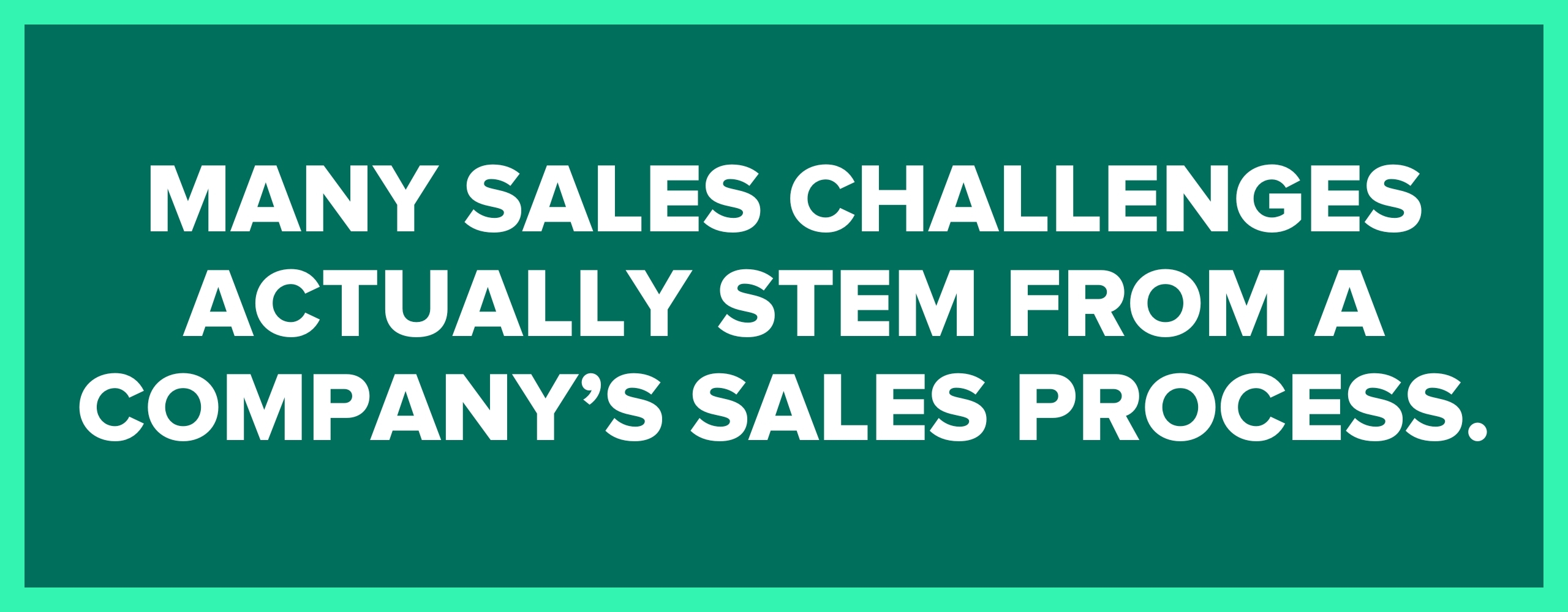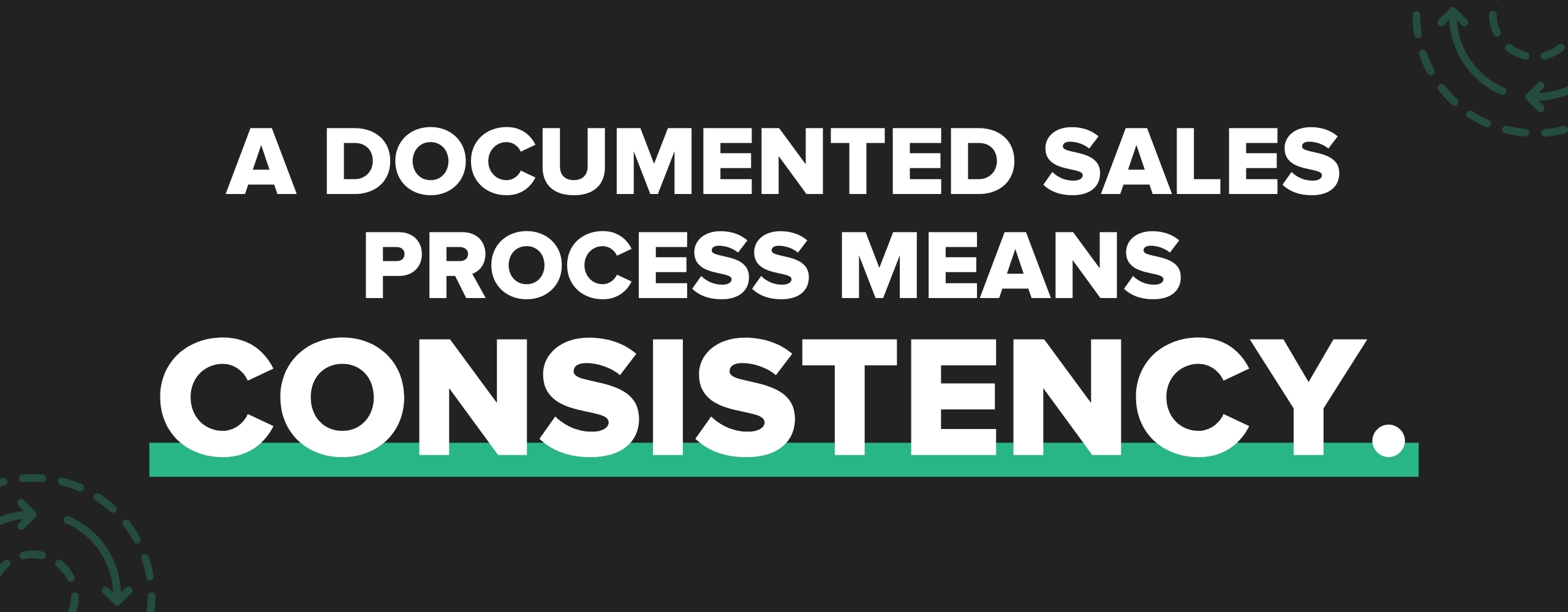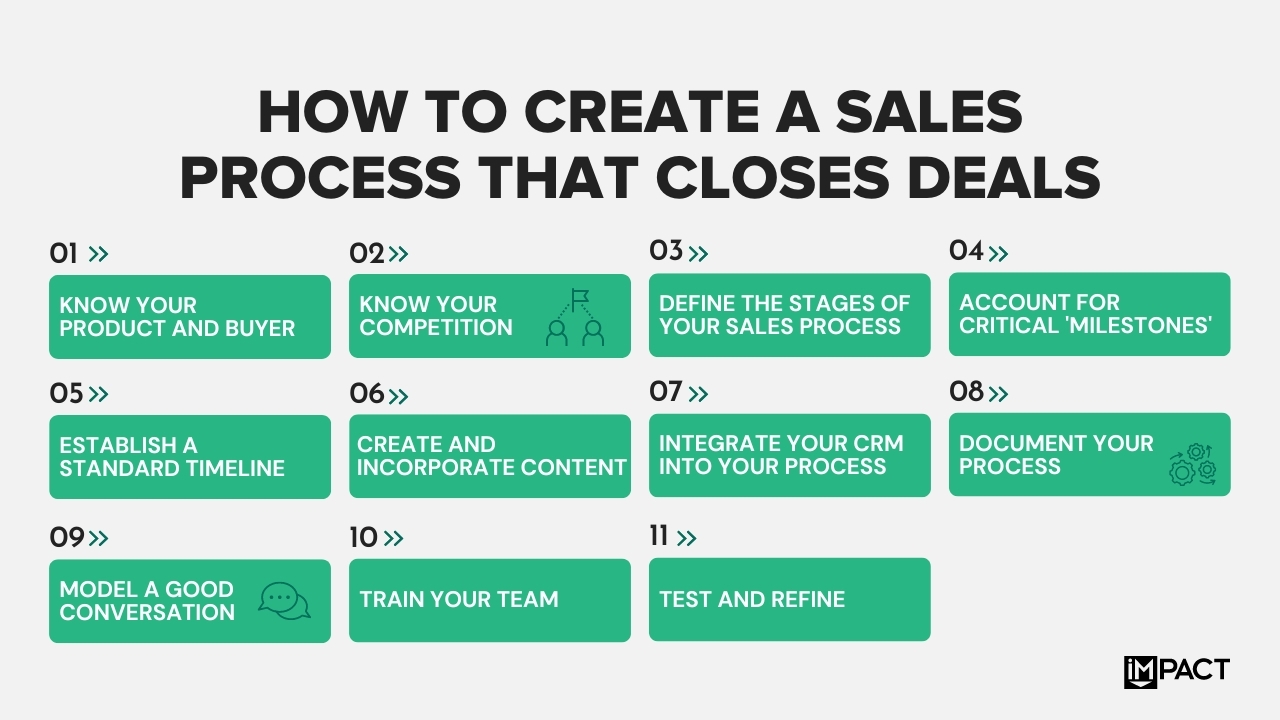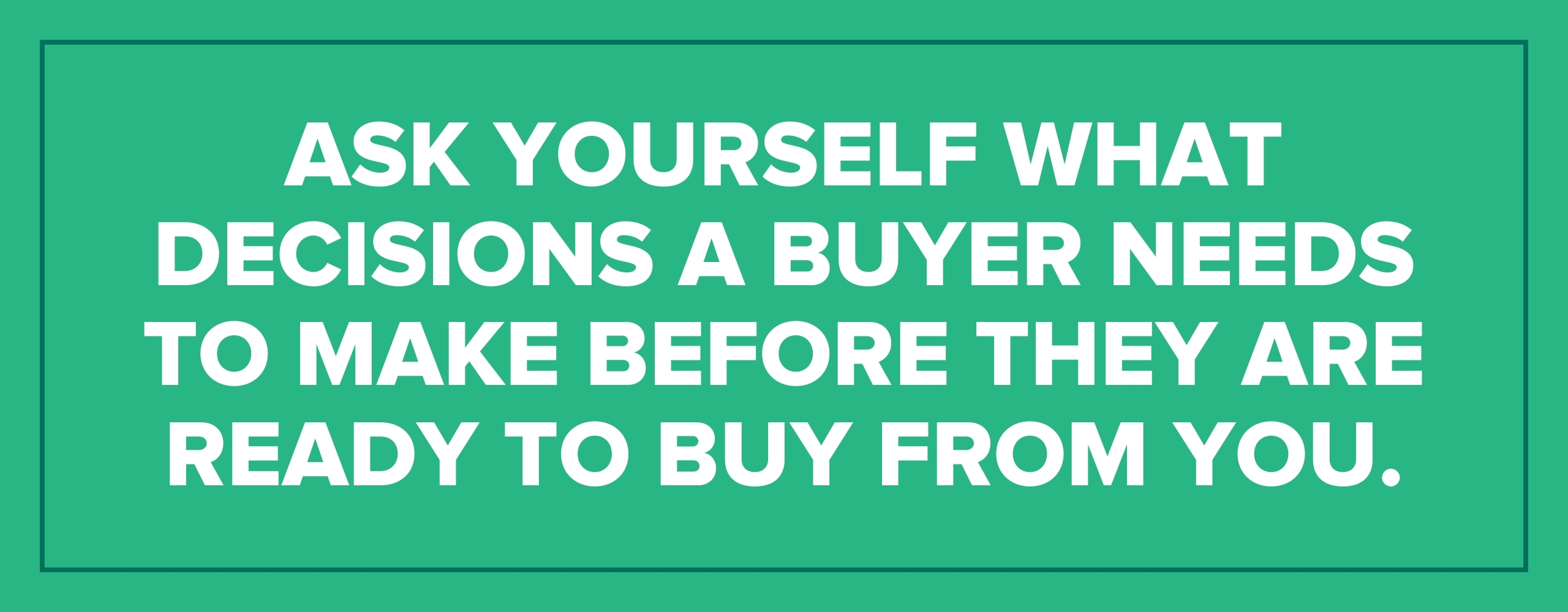Subscribe now and get the latest podcast releases delivered straight to your inbox.
How To Create a Sales Process That Closes More Deals

Apr 3, 2023

With inflation and threats of a recession afoot, sales are becoming harder to close for businesses of all shapes and sizes.
A continuous flow of new business is what keeps food on the tables of your employees and the doors of your offices open. So naturally, if sales are drying up, it’s likely a great concern to everyone in your organization.
Where are we going wrong? Are we attracting the wrong leads? What’s missing from our product or service?
All these questions may be flooding your mind, but in our experience, many sales challenges actually stem from a company’s sales process.

Perhaps your sales team is being inconsistent, neglecting crucial steps in the buyer’s journey, or not effectively addressing questions or objections that arise.
A well-thought-out, optimized, and standardized sales process helps you avoid common mistakes like these and increases the odds of your sales team moving deals across the finish line.
Over the last decade, IMPACT has tested and fine-tuned its sales process and helped others do the same to ultimately close more deals and move them through the sales pipeline faster.
In this article, we’ll share some of those secrets.
First, why does your sales team need a documented sales process?
A documented sales process sets the standard for the sales experience inside and outside of your organization. In other words, it means consistency.

When executed by your sales team, a good sales process creates consistency in language, deal visibility, and results.
According to Derek Baer, sales strategist at Kurlan Associates:
“A formal sales process provides sales teams with a foundation to model proper sales behavior on and refer to when questions arise.
"It guides their conversations with prospects, instructs on next steps, and helps maintain control of the sales process by providing direction.”
A sales process also helps assure that all the necessary qualifying information is collected, realistic expectations have been set, and the opportunity has been positioned for the greatest chance of success.
How to create a sales process that closes deals

Ideally, your documented sales process is the most optimized version of the journey to a purchase. Here's how to put yours together.
1. Know your product and buyer
This is a bit obvious, but you first need to know what you’re selling inside and out. Know what problems and pain points it fixes and what kind of people can benefit from it. Know what would push someone to make a change.
This provides your foundational value proposition and grounds for qualifying or disqualifying prospects.
2. Know your competition
Who else is offering a solution to the problem you solve? How does it work? How is it different from yours? How is it better or worse?
Knowing the answers to these questions will help you better understand how to position yourself against them.
3. Define the stages of your buyer's journey and sales process
Put yourself in your customer’s shoes.
What's their buyer's journey look like? What are the steps someone typically takes from the discovery of your product to purchase?
Knowing these are crucial to understanding what happens and needs to happen for someone to move toward a purchase.
They are also the foundation of the stages of your sales process.
A good place to start with defining your stages is with the decisions a buyer has to make or conclusions they need to come to before they make a purchase.

For example, if you sell cars, ask yourself what decisions a buyer needs to make before they are ready to buy from you.
First, they need to decide that it’s time to upgrade their old car.
Then, they need to decide on their budget.
Then, they need to decide about make, model, and features, and everything else.
Some of these decisions may come in a different order or many may come at the same time. Regardless, however, each decision is a natural transition and is likely a smart place to mark as the end of one stage and the start of another.
4. Account for critical 'milestones'
Once you know the steps of your typical buyer’s journey and the stages of your sales process, Baer stresses accounting for three critical milestones.
Identification of the problem
You can’t sell your product or service if you don’t know what value it can bring to the buyer, and frankly, different products can have different values to different people. That’s why in your sales process you need to make sure you learn why a prospect needs your help.
What is the pain they are feeling? What is the problem they are trying to solve? What is the challenge they face?
You want to understand this from both a practical standpoint as well as an emotional one. This will help you shape future conversations around what is most important to your prospect.
Quantification of the problem
Part of understanding and defining the problem includes quantifying the problem.
This means understanding how much time or money the existing problem is costing your potential customers.
How much time are they investing to deal with this problem and what is their time worth? How much money has the problem cost the prospect? Are they losing money or customers?
Quantifying the cost of the problem may help you and your prospect justify the budget required to solve the problem.
It will also help you better grasp your prospect’s point of view and what kind of information you need to deliver to guide them closer to making a purchase.
Defined commitment
If the prospect were to move forward, what would that look like? Who would have to be involved? Who would make the final decision? What conditions would have to be met on both ends? What does the prospect need to do?
A clear understanding of the commitment required from your prospect and your company brings more clarity to what you need to do next.
Discussing and defining commitment with a prospect, or the lack of it, also provides insight into their likelihood to close.
5. Establish a standard timeline
Speaking of closing, how long will it take?
Establish a benchmark for how long a deal should be in each stage of your process so you can keep it moving along.
For example, while the prospect stage may take only seven days, how long should it take to move through the other stages at your company?
When discussing commitment, you should also discuss a timeline for when your engagement would begin, when a decision will be made, and how long it will take to get started.
This helps hold prospects accountable and helps sales reps from letting deals go cold.
6. Create and incorporate content
Often what’s keeping your buyer from moving forward is an unanswered question, concern, or objection.
Enter sales enablement content.
Sales enablement content helps move your prospect through the sales pipeline faster by addressing these unanswered questions and concerns head-on as they come up.
Rather than being at a loss for words when a question or comment comes up, you can implement what Marcus Sheridan calls assignment selling.
Assignment selling is the process of using educational content to resolve major concerns and questions of prospects and ideally move them closer to making a purchase.
This may mean sending content to review before you hop on a call or even sharing something while you’re in conversation for them to look at before your next meeting.
The content shared can be written (like a buyer's guide, article, or case study), visual, or even interactive.
In fact, 80% videos, self-service tools, and articles on product comparisons or pricing are just some of the types of content that can be very effective in your sales process.
All in all, knowing your sales process and the journey of your potential customers, create or gather the content you need to aid it.
7. Integrate your CRM into your process
A well-maintained customer relationship management (CRM) database and software can make executing your sales cycle much more efficient and effective.
With this in mind, take a look at your new sales process and determine when and where it can be aided by your CRM.
In other words, is there an automated email that can be sent out when a particular field is filled out or after a meeting occurs? Should your sales reps be noting particular things in the CRM as they hold conversations?
Outline all of this and add it to your process. Sales process automation can make a world of difference.
8. Document your process
With these steps and guidelines in hand, document them! Get the sales process written out in detail and shared somewhere everyone in your organization, especially sales, can easily view and access it.
9. Model a good conversation
To further aid your team, outline what a typical successful sales conversation or sales pitch may sound like. This should also include when you would make notes or turn to your CRM or incorporate content.
While not all conversations will be the same, this sample will give your sales team something to model their approach on and something to strive for.
10. Train your team
Next, train your sales team on the new process.
Of course, the new documentation will be available for reference, but it’s important to actually walk your sales reps through the new process and give them the opportunity to ask questions or provide feedback before they start implementing it.
11. Test and refine
As great as it would be, it’s more than likely that your sales process won’t be perfect right off the bat. You need to see how it performs in real life to spot any gaps or areas for improvement.
Once your sales reps are trained, have them follow the process to a T and take note of what worked, what didn’t, what was missing, or what wasn’t needed.
Based on their feedback, your sales team can connect and refine the process as needed.
If you find yourself struggling to work through this process on your own, you might want to consider reaching out to a professional sales development firm to help you define the stages and get set up in a CRM, among other things.
Baseline Selling by Dave Kurlan is also a helpful read for getting you on the right track.
Next steps for your sales team
Selling is not easy, but having a well-thought-out, consistent, and of course, tried and tested sales process can do wonders to help you close more qualified leads.
Use the advice and steps above to start setting yourself up for sales process success, and if you still need guidance, we can help.


Order Your Copy of Marcus Sheridan's New Book — Endless Customers!